Apache Shiro是一個強大且易用的Java安全框架,執行身份驗證、授權、密碼和會話管理。使用Shiro的易於理解的API,您可以快速、輕鬆地獲得任何應用程式,從最小的移動應用程式到最大的網路和企業應用程式。 ...
廢話不多說,咱們直接接上回
上一篇我們講瞭如何使用Springboot框架整合Nosql,並於文章最後部分引入了服務端Session的概念
而早在上上一篇中,我們則已經講到瞭如何使用Springboot框架整合Mybatis/MybatisPlus實現業務數據的持久化(寫入資料庫)
本篇我們把關註點放在一個於這兩部分有共同交集的內容——安全管理,並且引入我們今天的主角——Shiro框架
Apache Shiro是一個強大且易用的Java安全框架,執行身份驗證、授權、密碼和會話管理。使用Shiro的易於理解的API,您可以快速、輕鬆地獲得任何應用程式,從最小的移動應用程式到最大的網路和企業應用程式。
—— 來自百度百科
Shiro框架包含三個核心組件:
Subject —— 泛指當前與Shiro交互中的實體,可以是用戶或者某後臺進程
SecurityManager —— Shiro的核心組件,對內管理各種組件實例,對外提供各種安全服務
Realm —— Shiro與安全數據之間的橋接器
Shiro框架還包含有其他諸多概念,為降低大家的心智負擔,這些我們暫且不談,文末會給大家推薦延展閱讀的相關文章
還是老規矩直接上乾貨,以完整的實例讓大家對【如何基於Shiro實現許可權的細粒度控制】有一個整體上的認知
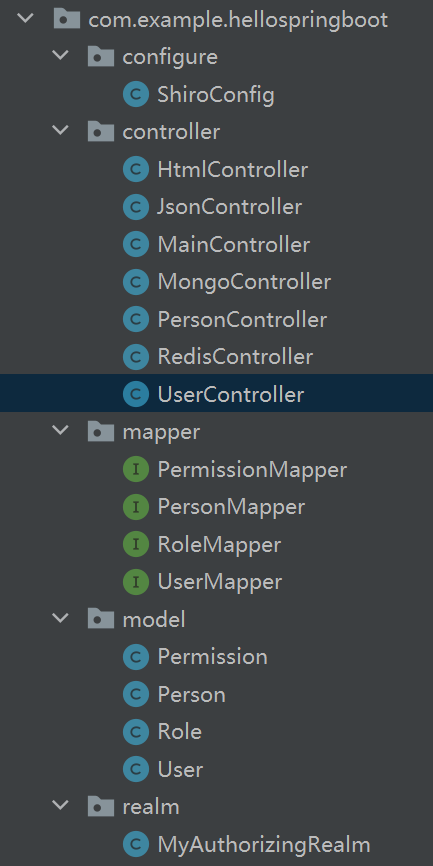
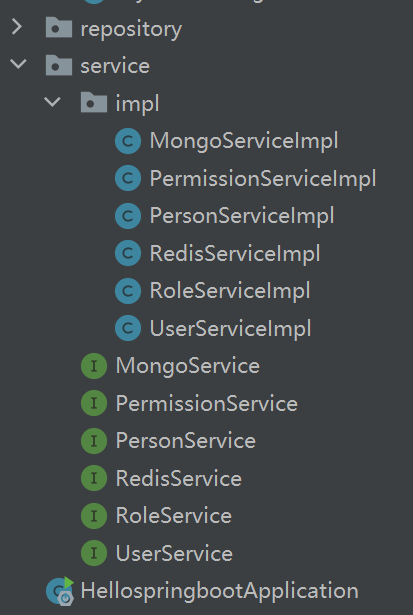
不知道大家會不會覺得項目結構突然變複雜?別擔心,接下來我會給大家逐一拆解
1. 創建數據表
首先是角色表——role
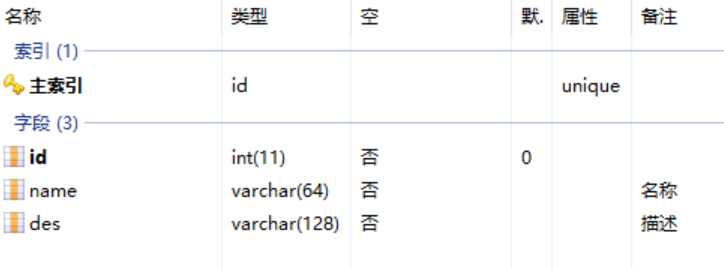

然後是用戶表——user


最後是許可權表——permission


2. 創建三個對應的Mapper
package com.example.hellospringboot.mapper; import com.baomidou.mybatisplus.core.mapper.BaseMapper; import com.example.hellospringboot.model.Role; import org.apache.ibatis.annotations.Mapper; import org.springframework.stereotype.Repository; @Mapper @Repository public interface RoleMapper extends BaseMapper<Role> { }
package com.example.hellospringboot.mapper; import com.baomidou.mybatisplus.core.mapper.BaseMapper; import com.example.hellospringboot.model.User; import org.apache.ibatis.annotations.Mapper; import org.springframework.stereotype.Repository; @Mapper @Repository public interface UserMapper extends BaseMapper<User> { }
package com.example.hellospringboot.mapper; import com.baomidou.mybatisplus.core.mapper.BaseMapper; import com.example.hellospringboot.model.Permission; import org.apache.ibatis.annotations.Mapper; import org.springframework.stereotype.Repository; @Mapper @Repository public interface PermissionMapper extends BaseMapper<Permission> { }
這裡我們用到了上上一節講到的內容
這裡的Mapper會輔助於後續的安全數據讀取
3. 接下來是Service及其實現類
package com.example.hellospringboot.service; import com.example.hellospringboot.model.Role; public interface RoleService { Role findRoleById(int id); }
package com.example.hellospringboot.service.impl; import com.example.hellospringboot.mapper.RoleMapper; import com.example.hellospringboot.model.Role; import com.example.hellospringboot.service.RoleService; import org.springframework.beans.factory.annotation.Autowired; import org.springframework.stereotype.Service; @Service public class RoleServiceImpl implements RoleService { @Autowired RoleMapper mapper; public Role findRoleById(int id){ Role role = mapper.selectById(id); return role; } }
package com.example.hellospringboot.service; import com.example.hellospringboot.model.User; public interface UserService { boolean checkUserByUsernameAndPassword(String userName, String passWord); User findUserByUserName(String userName); }
package com.example.hellospringboot.service.impl; import com.baomidou.mybatisplus.core.conditions.query.QueryWrapper; import com.example.hellospringboot.mapper.UserMapper; import com.example.hellospringboot.model.User; import com.example.hellospringboot.service.UserService; import org.springframework.beans.factory.annotation.Autowired; import org.springframework.stereotype.Service; import java.util.List; @Service public class UserServiceImpl implements UserService { @Autowired UserMapper mapper; public boolean checkUserByUsernameAndPassword(String userName, String passWord){ QueryWrapper<User> wrapper = new QueryWrapper<User>(); wrapper = wrapper.eq("user_name", userName).eq("pass_word",passWord); List<User> userList = mapper.selectList(wrapper); return userList.size() > 0; } public User findUserByUserName(String userName){ QueryWrapper<User> wrapper = new QueryWrapper<User>(); wrapper = wrapper.eq("user_name", userName); User user = mapper.selectOne(wrapper); return user; } }
package com.example.hellospringboot.service; import com.example.hellospringboot.model.Permission; import java.util.List; public interface PermissionService { List<Permission> findPermissionsByRoleId(int roleId); }
package com.example.hellospringboot.service.impl; import com.baomidou.mybatisplus.core.conditions.Wrapper; import com.baomidou.mybatisplus.core.conditions.query.QueryWrapper; import com.example.hellospringboot.mapper.PermissionMapper; import com.example.hellospringboot.model.Permission; import com.example.hellospringboot.service.PermissionService; import org.springframework.beans.factory.annotation.Autowired; import org.springframework.stereotype.Service; import java.util.List; @Service public class PermissionServiceImpl implements PermissionService { @Autowired PermissionMapper mapper; public List<Permission> findPermissionsByRoleId(int roleId){ QueryWrapper<Permission> wrapper = new QueryWrapper<>(); wrapper = wrapper.eq("role_id", roleId); List<Permission> list = mapper.selectList(wrapper); return list; } }
ok,我們已經準備好了所有的安全數據,及對應的讀取方法
到這裡,我們就算是做好了所有的準備工作
接下來看我們如何通過Shiro框架來運用這些已經裝配好的槍炮子彈
4. 引入Shiro框架相關依賴(pom.xml)
<!-- 引入shiro框架依賴 --> <dependency> <groupId>org.apache.shiro</groupId> <artifactId>shiro-spring</artifactId> <version>1.10.0</version> </dependency>
這次pom.xml終於不是第一步了,哈哈哈。。。
5. 創建Realm嫁接Shiro框架及安全數據(realm/MyAuthorizingRealm)
package com.example.hellospringboot.realm; import com.example.hellospringboot.model.Permission; import com.example.hellospringboot.model.Role; import com.example.hellospringboot.model.User; import com.example.hellospringboot.service.PermissionService; import com.example.hellospringboot.service.RoleService; import com.example.hellospringboot.service.UserService; import org.apache.shiro.authc.*; import org.apache.shiro.authz.AuthorizationInfo; import org.apache.shiro.authz.SimpleAuthorizationInfo; import org.apache.shiro.realm.AuthorizingRealm; import org.apache.shiro.subject.PrincipalCollection; import org.springframework.beans.factory.annotation.Autowired; import java.util.HashSet; import java.util.List; import java.util.Set; public class MyAuthorizingRealm extends AuthorizingRealm { @Autowired UserService userService; @Autowired RoleService roleService; @Autowired PermissionService permissionService; @Override protected AuthenticationInfo doGetAuthenticationInfo(AuthenticationToken authenticationToken) { UsernamePasswordToken token = (UsernamePasswordToken) authenticationToken; String userName = token.getUsername(); String passWord = String.valueOf(token.getPassword()); if (!userService.checkUserByUsernameAndPassword(userName, passWord)) {//判斷用戶賬號是否正確 throw new UnknownAccountException("用戶名或密碼錯誤!"); } return new SimpleAuthenticationInfo(userName, passWord, getName()); } @Override protected AuthorizationInfo doGetAuthorizationInfo(PrincipalCollection principalCollection) { SimpleAuthorizationInfo info = new SimpleAuthorizationInfo(); String userName = principalCollection.getPrimaryPrincipal().toString(); User user = userService.findUserByUserName(userName); if (user == null) { throw new UnknownAccountException("用戶名或密碼錯誤!"); } List<Integer> rolesList = user.rolesList(); Set<String> roles = new HashSet<>(); Set<String> permissions = new HashSet<>(); for (Integer roleId : rolesList) { Role role = roleService.findRoleById(roleId); roles.add(role.getName()); List<Permission> permissionList = permissionService.findPermissionsByRoleId(roleId); for (Permission permission : permissionList) { permissions.add(permission.getName()); } } info.setRoles(roles); info.setStringPermissions(permissions); return info; } }
Realm的創建對於整個Shiro安全驗證體系搭建而言是至關重要的一步!
其中兩個抽象方法
doGetAuthenticationInfo —— 用於校驗用戶名及密碼的合法性
doGetAuthorizationInfo —— 用於賦予實體對應的角色及交互許可權
6. 測試用Controller創建
package com.example.hellospringboot.controller; import org.apache.shiro.SecurityUtils; import org.apache.shiro.authc.AuthenticationException; import org.apache.shiro.authc.UsernamePasswordToken; import org.apache.shiro.subject.Subject; import org.springframework.web.bind.annotation.GetMapping; import org.springframework.web.bind.annotation.PostMapping; import org.springframework.web.bind.annotation.RequestMapping; import org.springframework.web.bind.annotation.RestController; @RequestMapping("/user") @RestController public class UserController { @PostMapping("/login") public String login(String user, String pass) { UsernamePasswordToken token = new UsernamePasswordToken(user, pass); Subject subject = SecurityUtils.getSubject(); if(!subject.isAuthenticated()) { try { subject.login(token); } catch (AuthenticationException e) { return e.getMessage(); } } return "ok"; } @PostMapping("/logout") public String logout(){ Subject subject = SecurityUtils.getSubject(); if(subject.isAuthenticated()) { try { subject.logout(); } catch (AuthenticationException e) { return e.getMessage(); } } return "ok"; } @GetMapping("/admin") public String admin() { return "admin"; } @GetMapping("/user") public String user() { return "user"; } }
內容很簡單:
login——登錄方法
logout——登出方法
admin、user——兩個測試方法,用於測試不同角色對於不同方法可訪問的細粒度控制
7. ShiroConfig配置類創建,實現用戶訪問許可權的細粒度控制
package com.example.hellospringboot.configure; import com.example.hellospringboot.realm.MyAuthorizingRealm; import org.apache.shiro.mgt.SecurityManager; import org.apache.shiro.realm.Realm; import org.apache.shiro.spring.web.ShiroFilterFactoryBean; import org.apache.shiro.web.mgt.DefaultWebSecurityManager; import org.springframework.context.annotation.Bean; import org.springframework.context.annotation.Configuration; import java.util.LinkedHashMap; import java.util.Map; @Configuration public class ShiroConfig { @Bean public SecurityManager securityManager(Realm realm) { DefaultWebSecurityManager securityManager = new DefaultWebSecurityManager(); securityManager.setRealm(realm); return securityManager; } @Bean public MyAuthorizingRealm getRealm() { MyAuthorizingRealm realm = new MyAuthorizingRealm(); return realm; } @Bean public ShiroFilterFactoryBean shiroFilterFactoryBean(SecurityManager securityManager) { ShiroFilterFactoryBean shiroFilter = new ShiroFilterFactoryBean(); shiroFilter.setSecurityManager(securityManager); Map<String, String> filterChainMap = new LinkedHashMap<String, String>(); filterChainMap.put("/user/login", "anon"); filterChainMap.put("/user/logout", "anon"); filterChainMap.put("/user/admin", "authc,roles[admin],perms[admin:read]"); filterChainMap.put("/user/user", "authc,roles[user],perms[user:read]"); shiroFilter.setFilterChainDefinitionMap(filterChainMap); return shiroFilter; } }
securityManager 和 getRealm 顯示指定了Shiro兩大組件的實例聲明
shiroFilterFactoryBean 則是實現角色訪問許可權控制的重要方法
filterChainMap.put("/user/login", "anon"); // 代表login方法可以匿名訪問
filterChainMap.put("/user/logout", "anon"); // 代表logout方法可以匿名訪問
filterChainMap.put("/user/admin", "authc,roles[admin],perms[admin:read]"); // 代表admin方法需要用戶滿足admin角色,同時具備admin:read許可權
filterChainMap.put("/user/user", "authc,roles[user],perms[user:read]"); // 代表user方法需要用戶滿足user角色,同時具備user:read許可權
至此,整個接入流程便結束了
我們再次結合最開始我們配置的數據來對業務邏輯進行分析
用戶 admin,同時具備admin、user兩種角色
用戶 juste,僅具備user一種角色
角色 admin,同時具備admin:write、admin:read兩種許可權
角色 user,同時具備user:write、user:read兩種許可權
因此
用戶 admin,同時具備admin:write、admin:read、user:write、user:read 四種操作許可權
用戶 juste,同時具備user:write、user:read兩種操作許可權
大家理清楚這其中的關係了嗎?^ ^
8. 執行Postman驗證結果
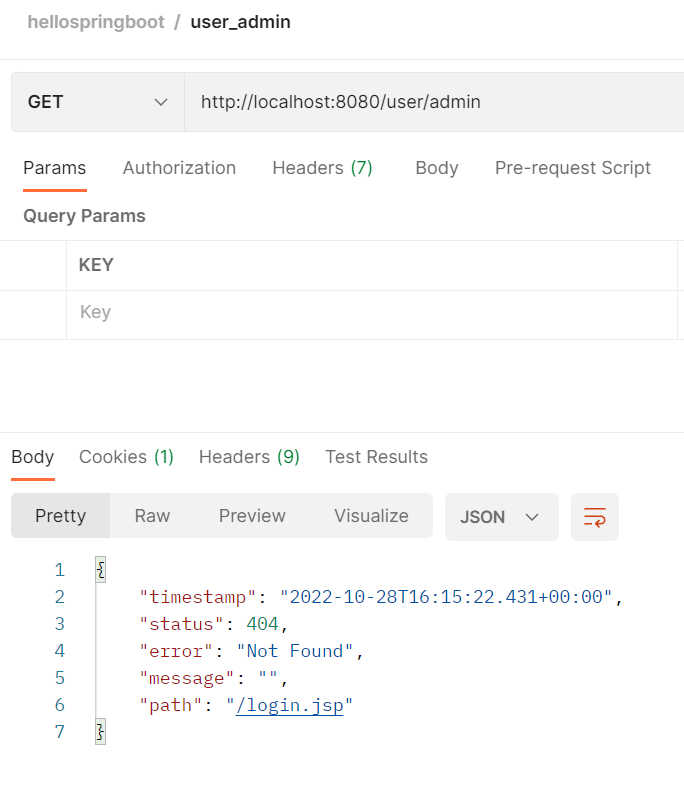
我們在執行login之前,admin方法無權訪問
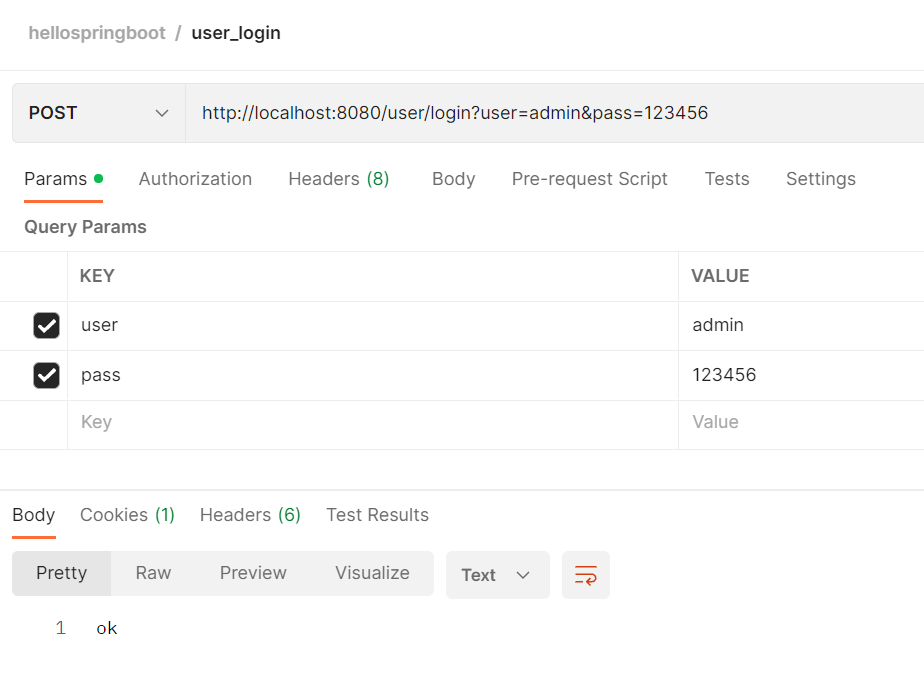

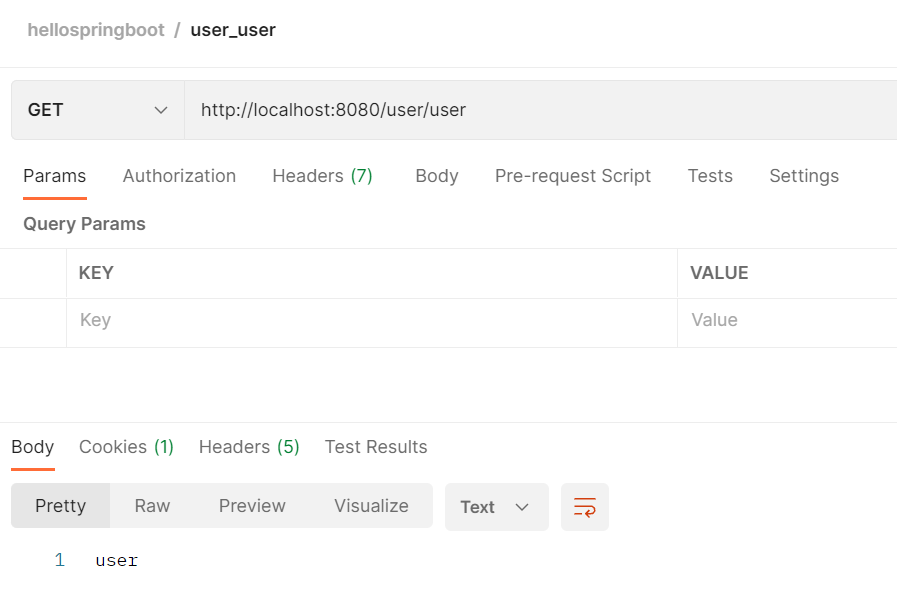
登錄admin之後,同時具備admin和user方法的訪問許可權
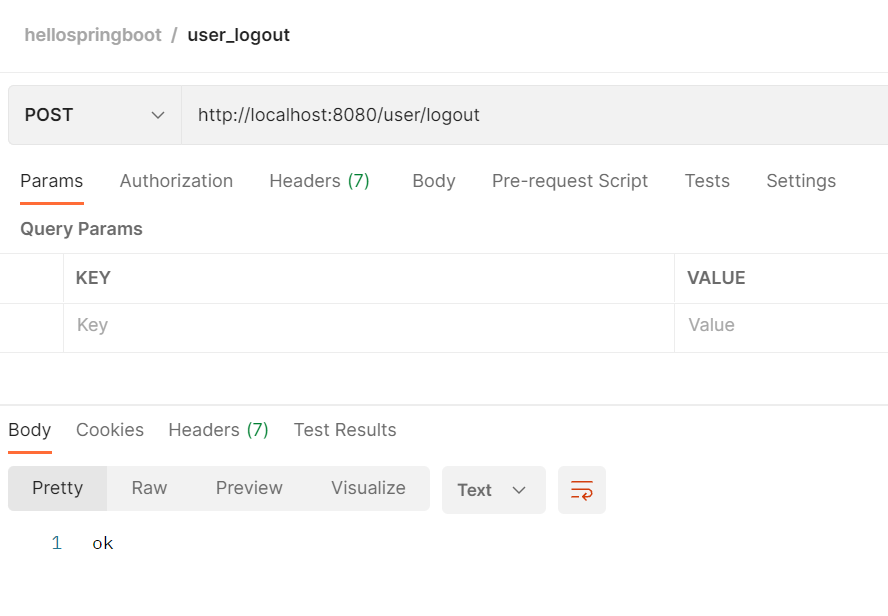
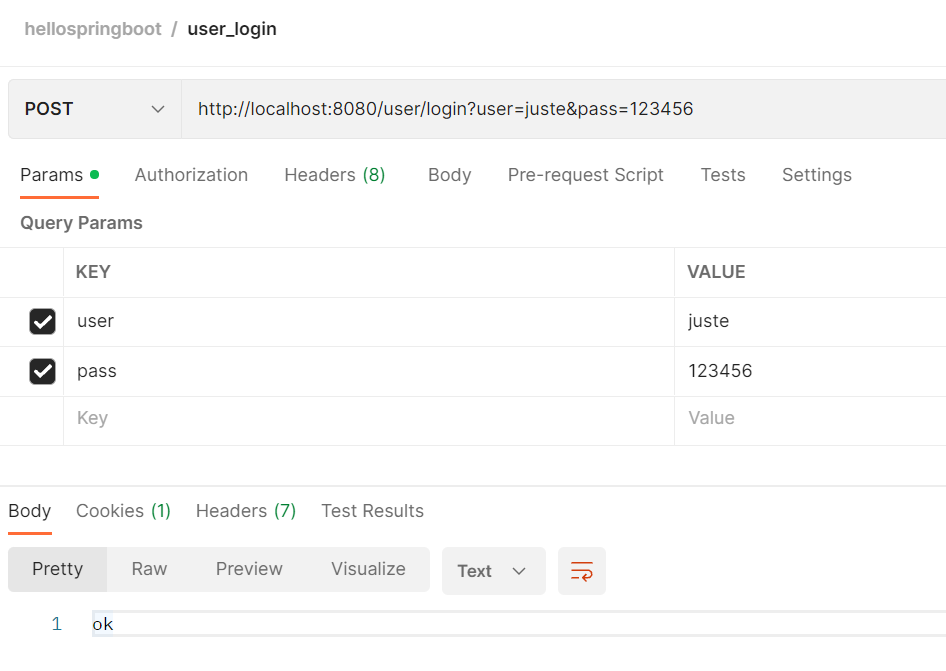

logout登出,然後login登錄普通用戶juste
會發現依然具備user方法的訪問許可權,但是失去了admin方法的訪問許可權
到此,驗證我們基於Shiro框架的細粒度許可權控制已經實現
除了Shiro框架,我們還有另一個選擇,那就是同樣可以通過集成Spring Security框架來達成相同的目的
關於更多Shiro框架的內容,及其和Spring Security之間的異同,大家感興趣可以參考這篇文章:
對於Spring Security框架,我們暫且留個懸念,以後會專門再給大家講解這部分內容
下一節,我們將把關註點投向微服務領域,SpringCloudAlibaba將會是接下來幾個章節的重頭戲,敬請期待~
MyAuthorizingRealm



